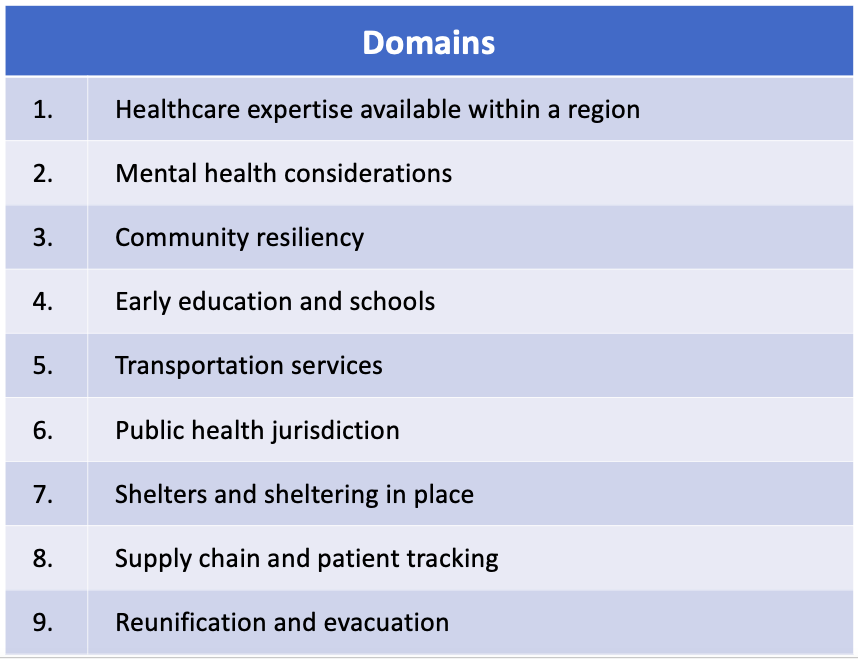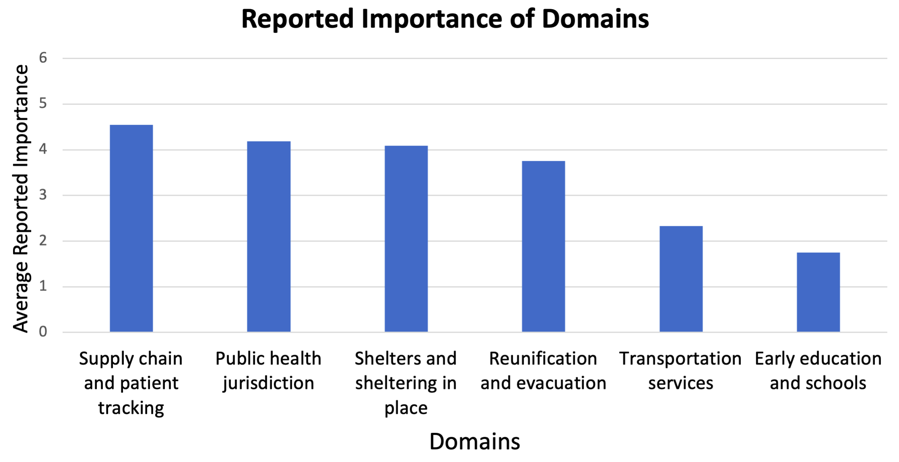Emergency Medicine: All Areas
Emergency Medicine 8
384 - Regional Metrics Pertinent for Children and Families in Disaster Cycle
Publication Number: 384.212

Michelle Pintea, MD, MPH
Pediatric Emergency Medicine Fellow
Washington University in St. Louis/St. Louis Children's Hospital
St. Louis, Missouri, United States
Presenting Author(s)
Background:
Awareness of day to day situations that can affect children and families in disasters is an important component to mitigation in the disaster cycle through the development of standardized metrics to evaluate all types of events. Tools have been created to assist communities to address hazards, such as the Hazard Vulnerability Analysis and the Threat Hazard Identification and Risk Assessment but unique needs of children are not included or highlighted in these tools. Region V for Kids was funded as a Pediatric Center of Disaster Excellence through The Office of the Assistant Secretary of Preparedness and Response to address this important problem.
Objective:
The regional scorecard was created to highlight the vulnerabilities of children and families that may exist within regions.
Design/Methods:
Along with the two Pediatric Disaster Centers of Excellence, and Emergency Medical Services for Children disaster domain experts, a group of pediatric disaster subject matter experts identified key infrastructure and support mechanisms that exist and could be important to healthcare coalitions or communities when considering children and families within a region. Through a modified delphi process, nine domains were recommended. To evaluate the scorecard and its usefulness, an IRB approved survey utilizing a Likert scale was sent at the time of the scorecard to gauge participants feedback on the tools ease of use, domains, and gaps.
Results:
Alignment of available measures that could inform the domains was completed and a scorecard was created to pilot among healthcare coalitions to better assess community level awareness for children and families that are important to the entire disaster cycle. Nine original domains were identified, however only three domains were included that had regional or national and open source databases and data points available for healthcare collisions to access. These three domains were healthcare expertise available within a region, mental health considerations, and community resiliency. The usefulness survey completed by regional healthcare coalitions, received a fifty percent response rate. More than half of respondents indicate they are somewhat likely to make changes based on the data they elicited from the scorecard.
Conclusion(s):
The new version of the tool is available online with Application Programming Interface to assist in ease of use. When used at least annually, this regional metrics tool can inform where improvement and where further attention is needed to better prepare for future disasters, improving the resilience for children and families and the entire community. 

